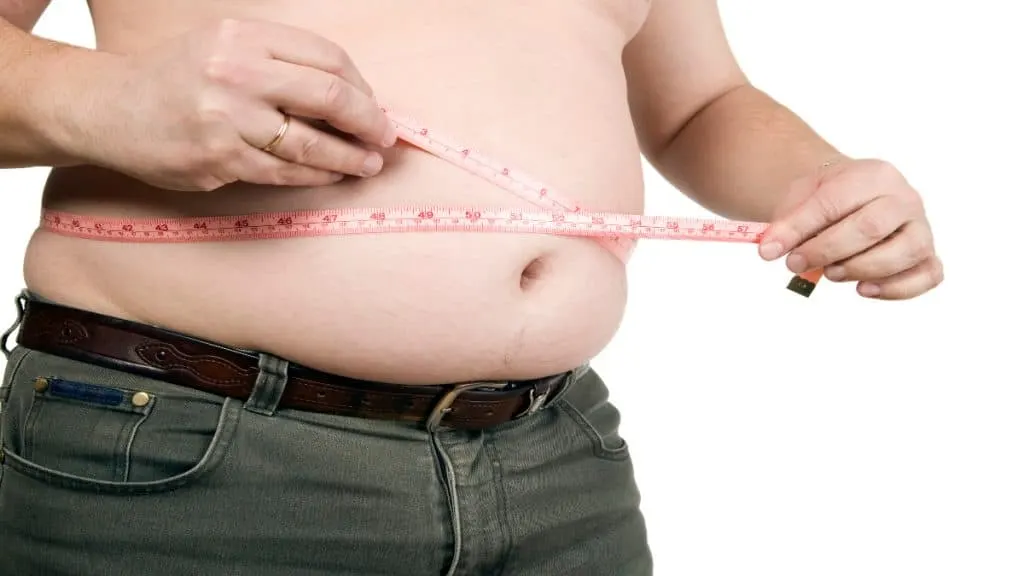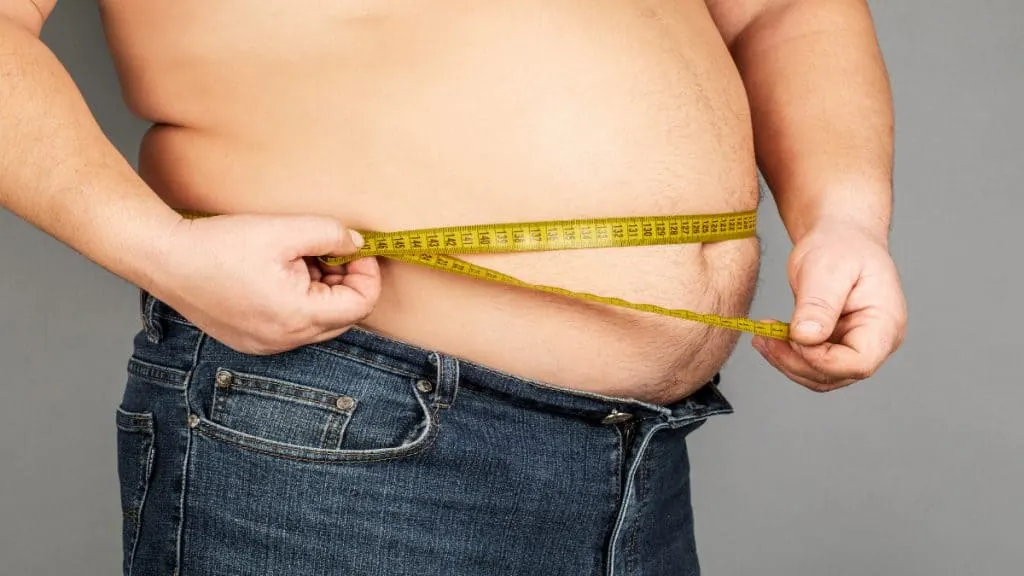
A 43 inch waist measurement refers to the circumference of the waist, and it is an indicator of one’s health and fitness level. A waist size of 43 inches or more can be a sign of obesity, which is a serious health condition that can lead to various health problems, such as heart disease, diabetes, and high blood pressure.
Obesity is often caused by a combination of factors, including a sedentary lifestyle, poor diet, and genetics. It is important to maintain a healthy weight to reduce the risk of these health problems.
There are many ways to reduce waist size and improve overall health, such as increasing physical activity, eating a balanced and nutritious diet, and reducing stress levels. It is important to make lifestyle changes gradually and consistently rather than trying to make drastic changes all at once.

If you are concerned about your waist size, it is always a good idea to consult with a healthcare professional to discuss your options and develop a personalized plan that fits your specific needs and goals.
Related Waist Size Guides:
- 40 inch waistline
- 41 inch waistline
- 42 inch waistline
- 44 inch waistline
- 45 inch waistline
- 46 inch waistline
- 47 inch waistline
- 48 inch waistline
- 49 inch waistline
Contents
How big is a 43 inch waist for a man?
A 43 inch waist for a man is considered quite large. It indicates that the man has a significant amount of abdominal fat, which can be a risk factor for various health issues. It’s important to note that waist size is just one indicator of overall health and should be considered in conjunction with other factors such as BMI and lifestyle habits.
Having a waist size of 43 inches or more can increase the risk of developing conditions such as type 2 diabetes, high blood pressure, and heart disease. It’s recommended that men aim for a waist size of less than 40 inches to reduce these risks.
To reduce waist size, lifestyle changes such as regular exercise and a healthy diet can be beneficial. Exercises that target the abdominal muscles can help to tone and reduce waist size. Eating a diet that is high in fiber and low in processed foods can also aid in weight loss and reduce waist size.

In conclusion, a waist size of 43 inches or more for a man is considered large and can be a risk factor for various health issues. Making lifestyle changes such as regular exercise and a healthy diet can help to reduce waist size and improve overall health.
How about for a woman?
For a woman, a 43 inch waist is also considered quite large and can be a cause for concern. It indicates the presence of a significant amount of abdominal fat, which can increase the risk of various health issues.
Women with a waist size of 35 inches or more have an increased risk of developing conditions such as type 2 diabetes, high blood pressure, and heart disease. It’s recommended that women aim for a waist size of less than 35 inches to reduce these risks.
To reduce waist size, lifestyle changes such as regular exercise and a healthy diet can be beneficial. Exercises that target the abdominal muscles, such as crunches and planks, can help to tone and reduce waist size. Eating a diet that is high in fiber and low in processed foods can also aid in weight loss and reduce waist size.
It’s important to note that waist size is just one indicator of overall health and should be considered in conjunction with other factors such as BMI and lifestyle habits. Women should talk to their healthcare provider if they have concerns about their waist size or overall health.

In conclusion, a waist size of 43 inches or more for a woman is considered large and can increase the risk of various health issues. Making lifestyle changes such as regular exercise and a healthy diet can help to reduce waist size and improve overall health.
Why is having a 43″ waist bad?
Having a waist measurement of 43 inches can be a cause for concern as it indicates excess abdominal fat. Carrying excess fat around the midsection can increase the risk of various health issues, such as type 2 diabetes, heart disease, and high blood pressure. It can also lead to sleep apnea, certain cancers, and mobility issues.
Furthermore, having a larger waist size may impact an individual’s self-esteem and confidence. It can also limit their clothing options and make it difficult to find clothes that fit comfortably.
It is important to note that waist size alone does not determine overall health, and other factors such as physical activity, diet, and genetics also play a role. However, maintaining a healthy waist size can be a good indication of overall health and reduce the risk of various health issues.

To reduce waist size, incorporating healthy habits such as regular exercise and a balanced diet can be helpful. Additionally, reducing stress levels, getting enough sleep, and limiting alcohol intake can also contribute to overall health and well-being.
How can you slim your 43 in waist naturally?
If you’re looking to slim down your 43-inch waist naturally, there are a few things you can try. Here are some tips that might help:
First, start by drinking plenty of water. Aim for at least 8-10 glasses per day to help flush out toxins and reduce bloating.
Next, try incorporating more whole foods into your diet. Focus on eating plenty of fresh fruits, vegetables, and lean protein sources like chicken or fish. Avoid processed foods and sugary drinks, as these can contribute to weight gain.
Exercise can also be helpful in slimming down your waistline. Try to incorporate both cardio and strength training into your routine, as this can help you burn fat and build muscle.
Another tip is to focus on improving your posture. Standing up straight and engaging your core muscles can help create the illusion of a slimmer waistline.

Finally, be patient with yourself. It may take some time to see results, but with consistency and dedication, you can achieve your goals. Remember to listen to your body and make changes that work for you.
Can anyone reduce their 43 inch waistline?
Yes, it is possible for someone to reduce their 43 inch waistline with some lifestyle changes. Here are some tips:
- Firstly, increase physical activity. Incorporate regular exercise into your daily routine, such as jogging, brisk walking, or cycling. Exercise helps to burn calories and reduce body fat, including the waistline.
- Secondly, eat a healthy and balanced diet. Reduce the intake of processed and high-fat foods, sugary drinks, and alcohol. Eat more fruits, vegetables, whole grains, and lean protein sources.
- Thirdly, avoid sedentary behavior. Spend less time sitting and more time standing, walking, or doing other physical activities.
- Fourthly, stay hydrated by drinking plenty of water. Dehydration can lead to bloating and water retention, making the waistline appear larger.
- Finally, get enough sleep, as sleep deprivation can lead to weight gain and increase the risk of obesity.

By making these lifestyle changes, it is possible to reduce the waistline and improve overall health. Remember that consistency is key, and it may take time to see results, but the benefits are worth the effort.
Conclusion
In conclusion, a waist size of 43 inches or more for both men and women is considered large and can increase the risk of various health issues such as heart disease, high blood pressure, and diabetes. It is recommended that men aim for a waist size of less than 40 inches, while women should aim for a waist size of less than 35 inches to reduce these risks.
Lifestyle changes such as regular exercise and a healthy diet can be beneficial in reducing waist size, along with reducing stress levels, getting enough sleep, and limiting alcohol intake. It is important to consult with a healthcare professional to discuss your options and develop a personalized plan that fits your specific needs and goals.
Remember to be patient with yourself, make lifestyle changes gradually, and listen to your body to achieve your goals.
References
- National Institute of Diabetes and Digestive and Kidney Diseases. (2017). Health Risks of Being Overweight. Retrieved from https://www.niddk.nih.gov/health-information/weight-management/health-risks-overweight
- Centers for Disease Control and Prevention. (2021). Assessing Your Weight. Retrieved from https://www.cdc.gov/healthyweight/assessing/index.html
- Harvard Health Publishing. (2019). Abdominal fat and what to do about it. Retrieved from https://www.health.harvard.edu/staying-healthy/abdominal-fat-and-what-to-do-about-it
- American Heart Association. (2021). Abdominal fat and your heart. Retrieved from https://www.heart.org/en/healthy-living/healthy-eating/eat-smart/nutrition-basics/abdominal-fat-and-your-heart